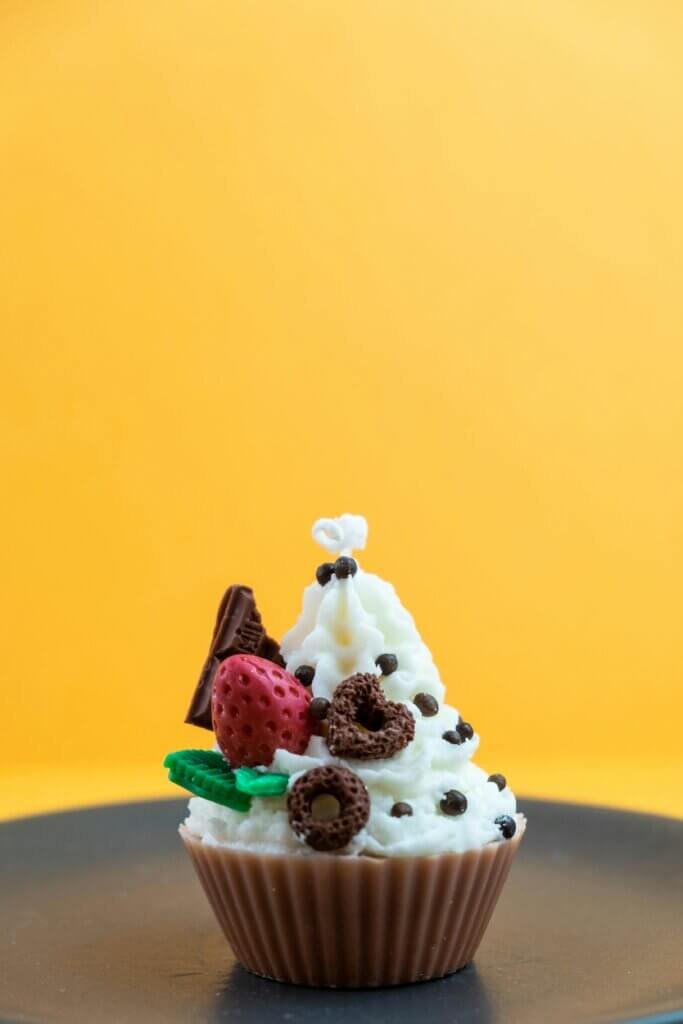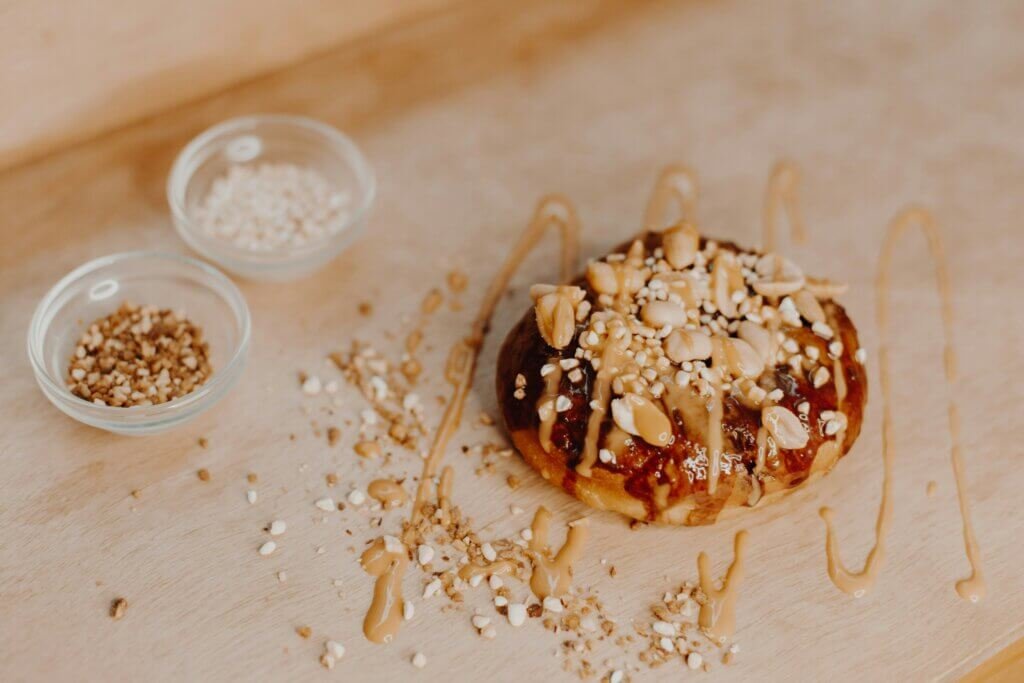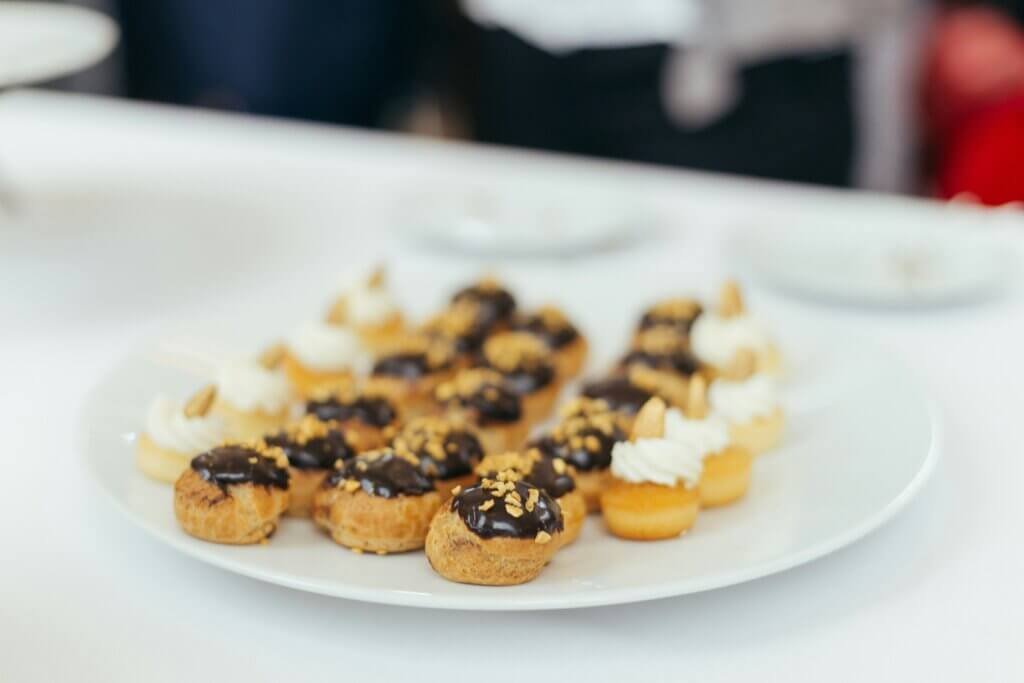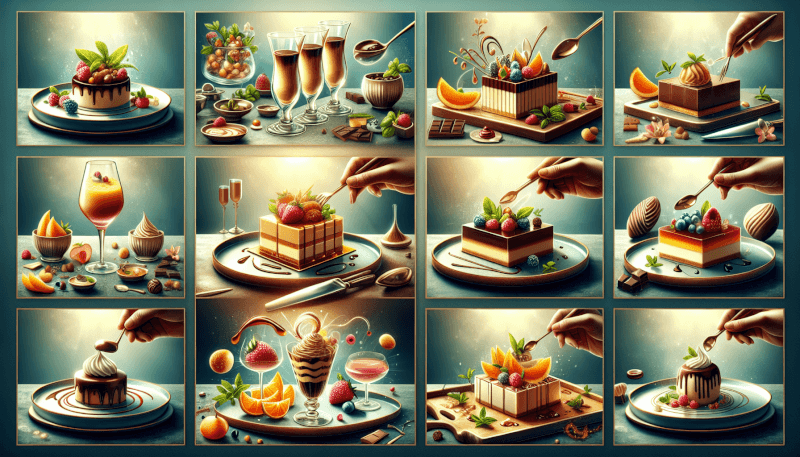Imagine being able to create stunning and mouthwatering plated desserts that will wow your guests and make them feel like they are dining in a top-notch restaurant. With just a few simple tips and tricks, you can easily achieve a professional and impressive finish to your desserts. In this article, we will share easy-to-follow techniques and ideas that will elevate your dessert game to a whole new level. Get ready to amaze your friends and family with delectable treats that not only taste incredible but also look like a work of art on the plate. So let’s get started and unlock the secret to creating restaurant-quality plated desserts that will leave everyone craving for more.
Choosing the Right Dessert
Considering the target audience
When choosing a dessert for your restaurant’s menu, it’s important to consider the preferences and tastes of your target audience. Are they more inclined towards classic desserts or do they prefer experimental and unique flavors? Understanding the demographic of your customer base will help you make an informed decision. For example, if your restaurant is located in a family-friendly neighborhood, offering crowd-pleasers like chocolate cake or apple pie might be a safe bet. On the other hand, if your clientele consists of adventurous food enthusiasts, you can experiment with bold flavors and innovative combinations.
Matching the restaurant’s theme and cuisine
Another crucial aspect of selecting a dessert is ensuring that it aligns with the overall theme and cuisine of your restaurant. If your establishment focuses on Italian cuisine, it would be wise to offer classic Italian desserts like tiramisu or panna cotta. Similarly, if your restaurant has a modern and minimalistic vibe, you might want to consider serving desserts with clean lines and elegant presentations. The dessert should enhance the dining experience and complement the flavors of your main dishes, creating a cohesive culinary journey for your customers.
Taking into account the season and availability of ingredients
Fresh ingredients not only taste better but also provide a more visually appealing presentation. When choosing a dessert, it’s important to take into account the seasonality of ingredients. Incorporating fruits and flavors that are in season adds a burst of freshness and natural sweetness to your dishes. Additionally, using locally sourced ingredients supports the local economy and can be a unique selling point for your restaurant. By embracing seasonal variations and using high-quality, fresh ingredients, you can create a dessert menu that evolves throughout the year and excites your customers with new flavors and textures.
Basic Plating Techniques
Using a template for consistency
Consistency is key when it comes to plating desserts. Utilizing a template can help maintain a uniform presentation across multiple orders. A template can be as simple as a stencil or a strategically placed guide on the plate that assists in placing components in a consistent and visually appealing manner. This ensures that not only does each dessert look aesthetically pleasing, but also that the taste experience is consistent for your customers.
Creating height and layers
One way to elevate the presentation of your dessert is by creating height and layers on the plate. Breaking away from a flat, monotonous surface can add visual interest and make your dessert more inviting. This can be achieved by stacking components, utilizing different textures or even using edible supports like tuiles or sugar work. Building layers not only adds dimension to your dish but also allows for a harmonious blending of flavors and textures, creating a more sophisticated dining experience.
Balancing colors and textures
The visual appeal of a dessert plays a crucial role in enticing customers and setting the tone for the dining experience. When plating, it’s important to consider the overall color scheme and balance the different colors and textures on the plate. A well-balanced dessert utilizes a variety of colors to create visual interest and harmony. Consider incorporating complementary or contrasting colors to make your dessert visually striking. Similarly, balancing textures is key to creating a well-rounded dessert experience. Combining smooth, creamy components with crunchy or crispy elements adds excitement and depth to each bite.

Creative Garnishes
Using edible flowers and herbs
Edible flowers and herbs are not only visually appealing but also add a subtle hint of fragrance and flavor to your desserts. Flowers like pansies, violets, or lavender can instantly elevate the presentation of a dessert, adding a touch of elegance and whimsy. Fresh herbs such as mint, basil, or thyme can provide a burst of freshness and complement the flavors of the dessert. When using edible garnishes, it’s important to make sure they are properly cleaned and free of any pesticides. Their delicate nature requires careful handling, as they should be added just before serving to maintain their vibrant colors and flavors.
Incorporating chocolate decorations
Chocolate is a versatile medium that can be molded and shaped into various decorations to enhance the aesthetics of your dessert. From elegant curls and drizzles to intricate chocolate cages, the possibilities are endless. Chocolate decorations not only add visual appeal but also provide a rich, indulgent flavor to the dish. Dark, milk, or white chocolate can be used to create different effects, depending on the desired presentation. Whether it’s a simple cocoa dusting or an elaborate chocolate sculpture, incorporating chocolate decorations can elevate your dessert to a whole new level.
Adding a touch of gold leaf
For a touch of luxury and elegance, consider adding gold leaf to your plated desserts. Edible gold leaf is a thin sheet of real gold that can be delicately placed on desserts to create a stunning visual effect. The shimmering gold instantly catches the eye and adds a sense of opulence. It can be applied sparingly to highlight specific components or used more liberally to create a lavish presentation. Gold leaf works particularly well with desserts that have a dark or vibrant color palette, as it creates a striking contrast and makes the dessert truly stand out.
Artistic Sauce Drizzles
Mastering the art of thin lines
The art of sauce drizzling involves creating thin, controlled lines on the plate to add visual interest and enhance the presentation of the dessert. Whether it’s a chocolate ganache, fruit coulis, or caramel sauce, mastering the technique of thin lines requires practice and precision. Using a squeeze bottle or a piping bag with a narrow tip can help achieve the desired effect. Start with a steady hand and a slow, consistent movement to create clean lines that gracefully flow across the plate.
Creating elegant and abstract patterns
Sauce drizzles offer an opportunity for creativity and self-expression. Experiment with different shapes and patterns to create unique designs on the plate. From elegant swirls and lattices to abstract splatters and drips, the possibilities are endless. Consider the overall aesthetic of the dessert and the theme of your restaurant when choosing the style of your patterns. The choice of colors and the way they interact with other components can further enhance the artistic appeal of the dessert.
Combining multiple sauces and flavors
Sauce drizzles not only add visual appeal but also provide an opportunity to introduce additional flavors and textures to your dessert. By combining multiple sauces, you can create a more complex and layered taste experience. For example, drizzling a raspberry coulis alongside a chocolate ganache can offer a delightful balance of sweet and tangy flavors. Alternatively, pairing a caramel sauce with a citrus-infused cream can create a harmonious blend of rich and refreshing tastes. Experiment with different flavor combinations to surprise and delight your customers.

Dessert Sauces
Classic chocolate ganache
Chocolate ganache is a versatile and decadent sauce that can be used in a variety of desserts. It is made by combining chocolate and cream, resulting in a smooth and velvety texture. The richness and depth of flavor in chocolate ganache make it a perennial favorite among dessert lovers. Whether drizzled over a cake, used as a filling, or served alongside other components, chocolate ganache adds a luxurious touch to any dessert. Experiment with different types of chocolate, such as dark, milk, or white, to create unique flavor profiles.
Velvety caramel sauce
Caramel sauce is a staple in the world of desserts, renowned for its rich, buttery flavor and silky smooth texture. Made by caramelizing sugar and combining it with cream or butter, caramel sauce can be used in a myriad of ways. From topping ice cream to filling pastries or even incorporating it into a custard or mousse, caramel sauce adds a touch of indulgence to any dessert. Consider infusing the caramel with flavors like vanilla, sea salt, or bourbon to create interesting variations that will leave your customers craving more.
Fruit coulis for a burst of freshness
Fruit coulis is a vibrant and refreshing sauce made by pureeing fresh or frozen fruits and straining out the seeds and solids. It adds a burst of natural sweetness and acidity to desserts, balancing the richness of other components. Coulis can be made with a wide variety of fruits, including berries, tropical fruits, or citrus. Its versatility allows for endless flavor combinations and creative applications. Use it as a drizzle, a base for plating, or even as a sauce for accompanying fruit salads or cheesecakes. The bright colors and bold flavors of fruit coulis are sure to elevate your desserts.
Textured Components
Crunchy praline crumble
Adding a crunchy element to your desserts not only provides a textural contrast but also adds another layer of flavor. Praline crumble is made by combining caramelized sugar with nuts, such as almonds or hazelnuts, and then crushing them into small pieces. The resulting crumble can be sprinkled on top of desserts, used as a base to build layers, or even incorporated into creams or mousses. The combination of sweet, nutty flavors and a satisfying crunch makes praline crumble a versatile and popular choice among pastry chefs.
Creamy mousse or custard
Mousse and custard are indulgent components that add a creamy and luscious texture to desserts. Mousse is typically made by combining whipped cream, egg whites, and a flavoring agent, such as chocolate or fruit puree. Custard, on the other hand, is a thick, rich sauce made with eggs, sugar, and milk or cream. Both mousse and custard can be used as fillings, layers, or standalone components in desserts. Their smooth and velvety texture provides a satisfying mouthfeel that complements other elements on the plate.
Light and fluffy sponge cake
Sponge cake is a versatile component that can serve as the foundation for a wide range of desserts. Its airy and light texture makes it the perfect canvas for absorbing flavors and sauces. Whether used as a base for layering components or cut into interesting shapes to add visual interest, sponge cake provides a delicate and tender bite that contrasts with other textures. Experiment with different flavors, such as vanilla, chocolate, or citrus, to create customized variations that suit the overall profile of your dessert.

Perfectly Poached Fruits
Achieving the ideal consistency
Poached fruits can add a touch of elegance and sophistication to your desserts. The process of poaching involves slowly cooking fruits in a flavorful liquid, such as a sugar syrup or wine, until they become tender and infused with the surrounding flavors. The key to achieving the ideal consistency lies in controlling the heat and cooking time. Over-poaching can result in mushy fruits, while under-poaching can leave them firm and underdeveloped. Consistent monitoring and adjusting the cooking time based on the fruit’s ripeness will help you achieve perfectly poached fruits that are tender, juicy, and bursting with flavor.
Infusing with spices or liquor
To elevate the flavor profile of your poached fruits, consider infusing them with spices or liquor. Spices like cinnamon, star anise, or cardamom can add warmth and complexity to the fruits’ natural sweetness. Similarly, incorporating a splash of brandy, rum, or red wine can impart a sophisticated depth and richness to the poaching liquid. Experiment with different combinations to find unique flavor profiles that complement the overall taste of your dessert. The infused fruits will not only be visually appealing but also offer a delightful surprise with every bite.
Enhancing flavors with simple syrup
Simple syrup is a mixture of equal parts sugar and water that is heated until the sugar dissolves, resulting in a sweet liquid that can be used to enhance the flavors of poached fruits. By incorporating additional flavors into the simple syrup, such as vanilla, citrus zest, or herbs, you can infuse the fruits with a subtle yet distinct taste. The syrup can be poured over the poached fruits just before serving, allowing them to absorb the flavors and become even more flavorful and juicy. This simple technique can take your poached fruits to the next level, transforming them into a delectable and succulent dessert component.
Ice Cream and Sorbet Pairings
Creating interesting flavor combinations
Pairing ice cream or sorbet with your dessert opens up a world of possibilities in terms of flavor combinations. Ice cream, with its rich and creamy texture, can provide a luxurious and indulgent experience. Sorbet, on the other hand, offers a refreshing and fruit-forward option. When choosing flavors, consider contrasting or complementary pairings that enhance the overall taste. For example, pairing a rich and decadent chocolate cake with a refreshing mint chip ice cream can create a delightful balance of flavors. Alternatively, combining a tangy lemon sorbet with a buttery shortbread can provide a zesty and satisfying contrast.
Adding contrasting textures
In addition to flavor combinations, ice cream and sorbet can also add contrasting textures to your plated desserts. The smooth and creamy consistency of ice cream can create a velvety backdrop against crunchy or crispy components, such as biscotti or caramelized nuts. On the other hand, the sorbet’s icy and refreshing texture can provide a palate-cleansing effect when paired with denser or creamier elements. Experimenting with different textures allows for a more dynamic and satisfying dessert experience, engaging all the senses and surprising your customers with every bite.
Presenting in unique shapes
Ice cream and sorbet can be presented in unique shapes to add visual interest and elevate the overall presentation of your dessert. From classic quenelles to intricate sculptures, the shape of the frozen component can be customized to suit the theme and concept of your restaurant. Using specialized tools, such as ice cream scoops or piping bags, can assist in creating consistent and professional-looking shapes. Additionally, consider incorporating molds or freezing techniques that allow for unconventional shapes, such as popsicles, spheres, or even layered terrines. The presentation possibilities are endless, limited only by your imagination.

Tempered Chocolate Decorations
Making glossy chocolate curls
Tempering chocolate is a process that involves melting chocolate, cooling it, and then reheating it to specific temperatures, resulting in a glossy, stable, and perfectly set chocolate. When tempered correctly, the chocolate can be shaped into delicate curls that add a touch of elegance and sophistication to your plated desserts. Creating chocolate curls requires pouring the tempered chocolate onto a flat surface, such as a marble slab, and manipulating it with a palette knife or a chocolate scraper to form thin, beautiful curls. The curls can be used as a garnish, a topping, or even as a decorative element to add height and visual interest to your dessert.
Shaping delicate chocolate cages
Chocolate cages are intricate and delicate structures that can be formed by hand or using specialized molds. These cages add a touch of artistry to your desserts, creating a visually captivating display. To shape a chocolate cage, the tempered chocolate is spread thinly on acetate or parchment paper, and once partially set but still pliable, it is carefully bent and shaped into the desired form. The cages can encompass a variety of sizes and shapes, from simple geometric lines to more intricate lattice patterns. When placed on top of a dessert, they create a sense of elegance and sophistication, instantly impressing your customers.
Crafting elegant chocolate tuiles
Chocolate tuiles are thin, delicate wafers made from tempered chocolate that can be shaped into various decorative forms. They provide a striking visual element to your plated desserts, adding a touch of elegance and complexity. To create chocolate tuiles, the tempered chocolate is spread thinly onto a silicone mat or acetate sheet and shaped while still pliable. It can be molded into graceful curls, crisp waves, or even curved shapes. Once set, the tuiles can be carefully placed on the dessert, creating an exquisite and eye-catching decoration that adds a sophisticated flair to your presentation.
Deconstructed Desserts
Playing with different elements on the plate
Deconstructed desserts offer a unique and artistic approach to plating, allowing for a more interactive and customizable dining experience. By breaking down the traditional structure of a dessert and presenting its components separately on the plate, you provide your customers with the opportunity to build their own combinations. Playing with different elements on the plate, such as cake crumbs, fruit segments, sauces, and ice cream, encourages exploration and creativity. This playful presentation style offers a departure from the expected and allows for a more engaging and enjoyable dessert experience.
Building flavors and textures separately
In deconstructed desserts, each component is prepared separately, allowing for the individual flavors and textures to shine. By presenting these elements separately on the plate, you create a sensory experience where each bite can be customized. The customer has the freedom to combine different flavors and textures in each spoonful, tailoring the dessert to their personal taste preferences. This approach also allows for a greater appreciation of each component’s complexity and craftsmanship, as the flavors can be savored separately before they are combined and enjoyed together.
Allowing for customizable combinations
The beauty of deconstructed desserts lies in their versatility and adaptability. By presenting the components separately on the plate, you enable your customers to create their own unique combinations and flavor profiles. This not only encourages creativity but also accommodates individual preferences and dietary restrictions. For example, someone with a nut allergy can choose to exclude the nut-based crumble and focus on other elements. By offering a range of components and flavors, you empower your customers to engage with the dessert in a personalized and meaningful way, ultimately enhancing their dining experience.



